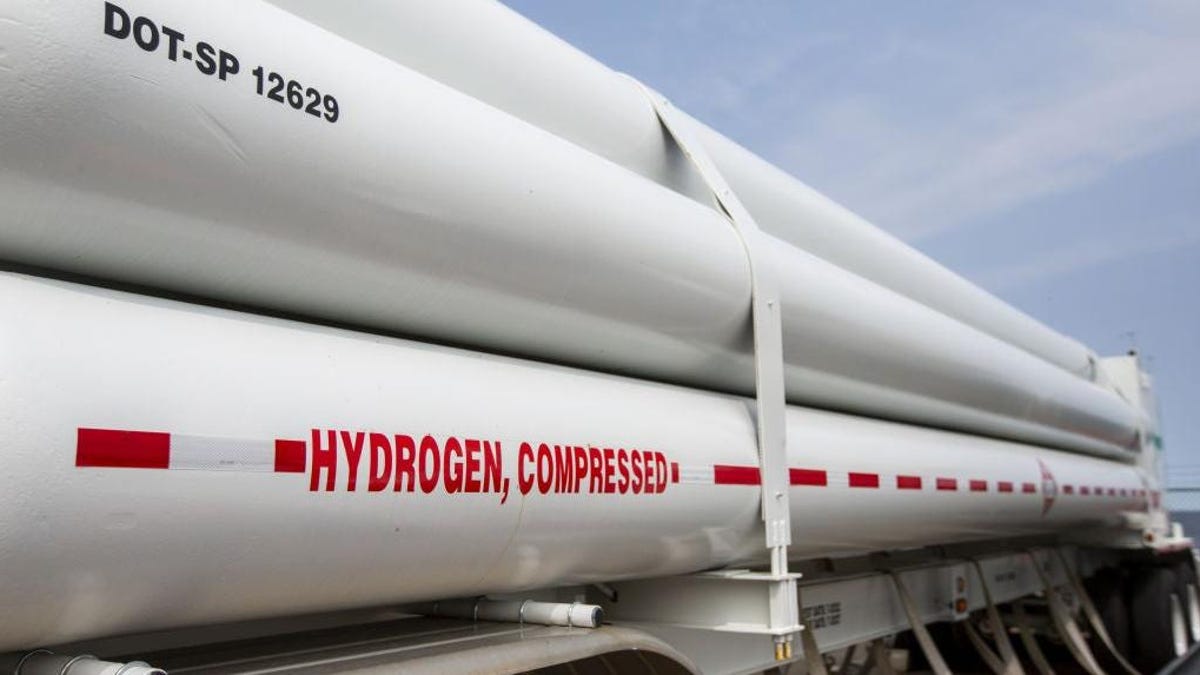The Biden administration is betting on hydrogen to power the country, create well-paying jobs, and lower climate-warming emissions. Last month, the president announced that $7 billion will be invested to create seven regional hydrogen-producing hubs across the U.S., promising to work with unions and disadvantaged areas so that “all communities share in the benefits of the clean energy transition.”
Why hydrogen? It’s one the most abundant elements in the universe, and it has the highest energy per mass compared to other fuels. Here are the key things to know as the U.S. embarks on a multibillion-dollar effort to reduce greenhouse gas emissions by developing hydrogen as a power source.
The Biden administration’s hydrogen hub investment
The White House announced the major investment, funded by the Bipartisan Infrastructure Law, on October 13. The plan suggests seven regional hubs, one each in the Mid-Atlantic, Appalachia, California, Gulf Coast, Heartland, Pacific Northwest, and Midwest. Once the hubs are up and running, they will cut emissions by 25 million metric tons of carbon dioxide each year, according to the White House. That’s the equivalent of emissions from more than 5 million gas-powered vehicles.
Aaron Feaver, executive director of energy research organization JCDREAM, said that several of the regional hubs will repurpose existing oil and gas infrastructure. The hubs are likely to be a combination of old fossil fuel facilities and new buildings that will house electrolyzer plants.
“It’s taking coal facilities that would have been decommissioned regardless of the hydrogen hub,” he told Earther. “Instead of just leaving that as an empty facility and [having] loss of jobs, we’re hoping to transition that to clean energy jobs by utilizing some of the existing infrastructure in those places.”
How hydrogen will produce ‘clean energy’
Hydrogen is a highly combustible gas. When it is burned through a fuel cell, it doesn’t create harmful byproducts—it creates water—hence the idea that hydrogen is a “clean” energy source (more on that claim in a moment). To create power, hydrogen is fed into a fuel cell, which separates it into protons and electrons. The electrons go into an internal circuit, which creates electricity. The protons go on to produce the water and heat.
Hydrogen energy is often described as several colors. For example, so-called blue hydrogen is produced from natural gas via a process called steam reforming. Carbon capture and monitoring tech are used to mitigate emissions produced by this method, according to a fact sheet from National Grid. This has lower carbon emissions than other hydrogen methods but produces methane. Pink hydrogen comes from nuclear energy, and black hydrogen is produced from black coal.
The cleanest form of hydrogen is referred to as green hydrogen. Not only is this produced by processing the hydrogen through fuel cells, but the electricity used to power the process has to come from renewable energy, too.
“If you use electrolytic hydrogen, you can call it green hydrogen, but if your power grid is not really well cleaned up, that hydrogen is not green,” Feaver said.
The challenge will be to ensure that the hubs eventually produce mainly green hydrogen. About two-thirds of the project’s investment is associated with green hydrogen. “What we really end up trying to focus on is the actual carbon footprint and the CO2 emissions associated with the entire lifecycle of whatever hydrogen [we’re] producing,” Feaver said.
But two of the hubs, including the one slated for the Gulf Coast, will rely mainly on blue hydrogen that’s made from natural gas, to “drive down the cost of hydrogen,” according to the White House. Production facilities will have to use carbon capture to offset the emissions produced there. But tech from carbon capture and carbon storage companies have not lived up to the promise, especially not at scale.
Hydrogen hub critics are wary of the ‘clean energy’ description
Some climate justice groups have pushed back on the hydrogen hubs. Several organizations expressed disappointment that the investment has been backed by oil and gas giants Chevron and ExxonMobil, as the Dallas Morning News reported. “We need an ambitious transition away from dirty energy, not another taxpayer subsidy that enables Big Oil to repackage fossil fuels as so-called clean energy,” Sarah Lutz, a spokesperson for Friends of the Earth, told the BBC.
Another part of the pushback comes from the fact that more than 90% of hydrogen in the U.S. is made from natural gas. Basav Sen, climate justice project director at the Institute for Policy Studies and a leading member of Climate Justice Alliance, is worried that oil and gas companies are going to use this to keep themselves relevant.
“That is the opposite of the kind of energy policy we need to see from the U.S. government,” he said. “We need to see an end to fossil fuel subsidies, rather than investing in inventing new ways to subsidize the fossil fuel industry.”
Pushback is also based on potential emissions. If the hubs don’t move toward almost entirely green hydrogen, this could increase the nation’s methane emissions, Sen warned. He’d rather see investments in solar and wind power as a way to create jobs, lower emissions, and phase out fossil fuels. “It makes much more sense to feed that renewable energy directly into the grid or to use excess energy to charge batteries,” he said.
Want more climate and environment stories? Check out Earther’s guides to decarbonizing your home, divesting from fossil fuels, packing a disaster go bag, and overcoming climate dread. And don’t miss our coverage of the latest IEA report on clean energy, the future of carbon dioxide removal, and the invasive plants you should rip to shreds.

